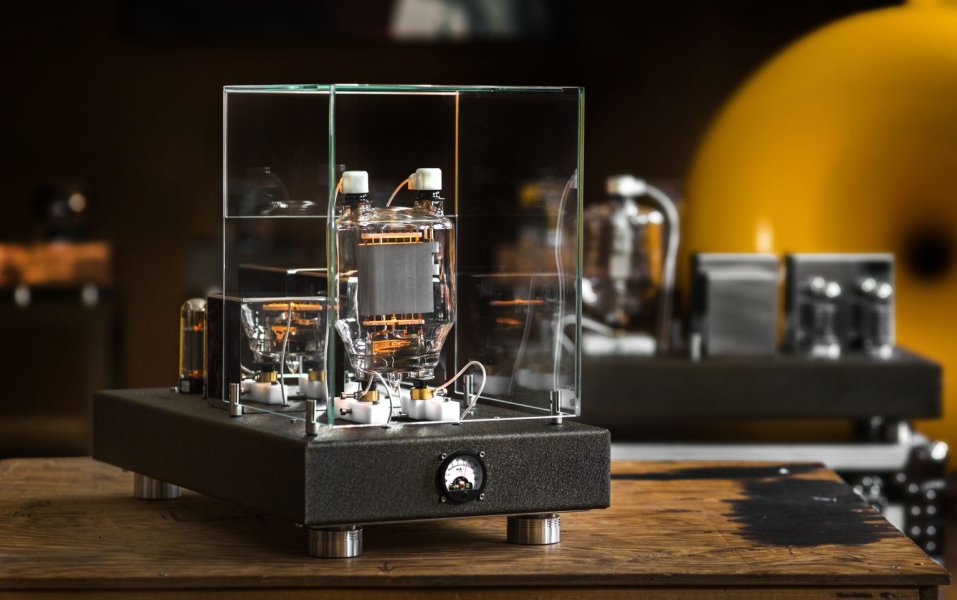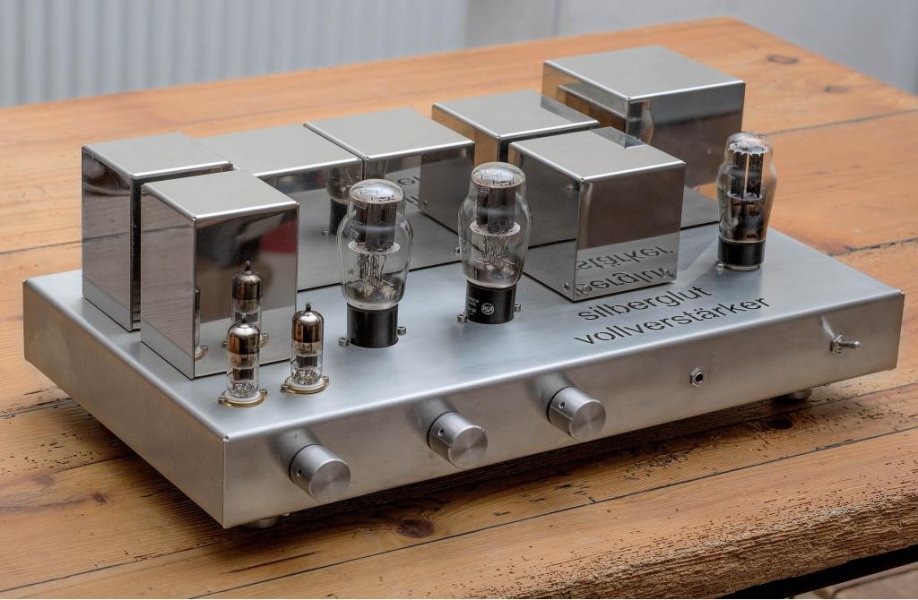Apparently morricab can't see what is on the page at the link. The plots do not show the bandwidth of the amp at full power (which seems to be about 15-16 Watts). How it works is that as you increase the output power at low frequencies, the lack of inductance in the output transformer starts to look like a short to the power tube so output drops off. If you measure the primary winding resistance, you can see how this is so. Its usually just a few hundred Ohms, while the load impedance needed for the tube to make power is usually several thousand Ohms.
FWIW Speltz's ZERO autoformer has helped out a lot of SET owners too. The problem is that many speakers these days are 4 Ohms in the bass and 8 Ohms in the mids and highs. SETs struggle with a load like that as any zero feedback tube amp does. The ZERO is a problem solver; Steve McCormick, who makes very competent solid state amps which can drive 4 Ohms with ease, sent Paul a letter stating that while his amps do so, that isn't the same as saying they sound their best. Steve found that his amps sound better driving 4 Ohms thru the ZEROs; the lesson being that 4 Ohms isn't good for most amps if high quality reproduction is your goal.
The comments Brad makes on his own and about Otala are rubbish: the problem is that
any feedback network must be carefully designed to allow the feedback to do its job with the amp properly without the load being able to mess with it (cause oscillation or the like). Clearly Mr. Otala didn't have such an amp at his disposal (and this was a problem in the 1970s and 80s- some amps would oscillate and blow up as described). Poorly designed feedback loops are a problem in audio- most of them really don't do the job. I have laid out what the problems are that have given feedback a bad name. None of them have to do with feedback itself; they have to do with execution.
Brad's comments about 'that back signal' is problematic. He is referring to 'back EMF' if I read that correctly. It most definately messes with the amp (whether OTL or SET)! The 'heat' is created in the power tubes themselves, raising their temperature. IOW they run hotter with a more diffcult load. Many people think that an output transformer isolates the tube from the load; this is only true of DC. Transformers
transform impedance which is how they got their name. It goes in both directions, not one (otherwise Kirchoff's Law, a basic law of electronics like Ohm's Law, is violated, which would create a new branch of physics

). So an adverse load that might generate back EMF is messing with the power tube(s) directly. It heats them up, causes distortion and shorter life. If you don't beleive me get a thermal camera (cheap on ebay), put the amp on different loads, play it and you'll see.
If anyone reading this wants a more technical explanation of what goes on with feedback, why high feedback amps of the 70s and 80s sucked and so on, read
this article. FWIW, since the 1970s and 80s, technology has marched on; we use things like the web that we take for granted. Why could amps not also evolve in that time?? The idea that the problems of the 70s and 80s designs haven't seen some progress is frankly ridiculous.
There's no reason a high feedback amp has to oscillate if the feedback network (usually multiple ordered) is properly designed. A class D design can take a simpler approach though by using the feedback to
actually cause the amp to oscillate- and the oscillation is then used as the switching frequency. Of course the feedback network has to be properly designed so the amp can only find one oscillation solution. The formula for that is called the 'oscillation criteria'.
Finally, the 'psychoacoustic findings' I've mentioned in the past are well known and consistent (for example that the 2nd harmonic is interpreted by the ear as 'warmth' or 'bloom'). These are the same findings that are why people like SETs. Brad seems to be shooting himself in the foot here.
Your prior statement you 'don't care' is contradicted by your continued attacks; its obvious to anyone you
do care else you would not continue posting. I've found that when someone contradicts themselves in this manner, the comments are never relevent to the thread itself.
As for whether it works for me or not, I've been doing the same stuff for 47th years now, not just 30...
WRT the Internet these are the rules I use:
stick to the truth
don't take anything personally (you have no idea what sort of problems the person on the other end of an argument has)
don't make personal attacks; 'attack the post, not the person' is a principle rule on any website.
Over time people learn who you are. I started on the Internet in 1990 before the web. So yes, it works for me.























